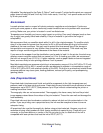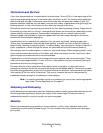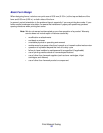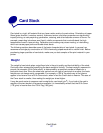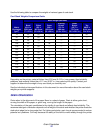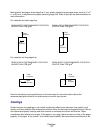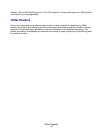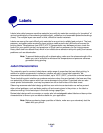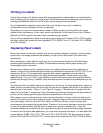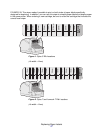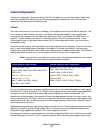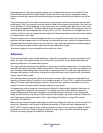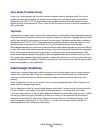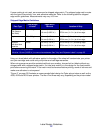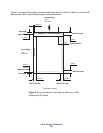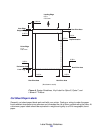
Printing on Labels
16
Printing on Labels
Use full label sheets only. Partial sheets (with areas exposed by missing labels) can cause labels to
peel off during printing, resulting in a paper jam. Partial sheets can also contaminate your printer and
cartridge with adhesive and can void the printer and cartridge service warranties.
Do not feed labels through the printer more than once. Doing so may result in adhesive
contamination to the cartridge and other components.
Depending on your printer model and the number of labels you print, printing labels may require
special printer maintenance. (Look under “printer maintenance” in the index of your User’s Guide or
publications CD for specific information about maintaining your printer.)
If you print large quantities of labels or other glossy print media on a Lexmark C750 or C752, replace
the fuser housing with a web oiler field upgrade kit (P/N 12G6307 for a 115 V printer, P/N 12G6308
for a 220 V printer).
Duplexing Paper Labels
Due to the special construction of labels, they are not typically duplexed. However, if certain design,
construction, and usage guidelines are followed, you can print on both sides of the label sheet
successfully.
When developing a paper label for duplexing, the converter should ensure that the label design
protects against contamination or buildup. Contamination adversely affects paper feeding and
causes paper jams in the printer.
We recommend labels used for duplexing have a non-adhesive border around the label area. In
addition, make sure the release strength is sufficient to withstand temperatures of 225°C (437°F) and
pressures to 25 psi. This is particularly important with a duplex application since the label is
subjected to these extremes twice. Use label ties whenever possible. These small uncut areas
(approximately 1.6 mm or 0.06 in.) help stabilize the label sheet and prevent tearing at perforations
and die-cuts during printing. In addition, using ties helps prevent the labels from predispensing in the
printer.
The slits and cuts in the labels expose the adhesives to the printer. For best results when duplexing
labels, position the label sheet so that the slits and cuts are not aligned with the ribs in the duplex or
redrive areas of the printer. (“Figure 1” and “Figure 2” on page 17 illustrate the rib locations for the
Optra S and the Optra T, respectively.) This eliminates any contact points between the label adhesive
and the printer, thereby preventing any adhesive contamination in the printer.
Other steps to ensure optimal printing include orienting the label in the tray so that the label end is
fed into the printer first, and using long grain paper. Long grain paper tends to feed more reliably than
short grain paper, which tends to curl more easily. As with any industry, product changes and
improvements are constantly being developed. Therefore, if a converter develops a short grain sheet
for use with duplexed labels, test the sheet to make sure it performs satisfactorily. In fact, we
recommend testing any material with your application and printer before purchasing large quantities.
In order to use the duplex label application, you must install a special fuser wiper. The wax wiper that
is used with the S1855, T612, T614, T520, and T522 is P/N 99A1082. The wax wiper that is used
with the T620 and T622 is P/N 18A1467. The wax wiper that is used with the T630, T632 and T634 is



